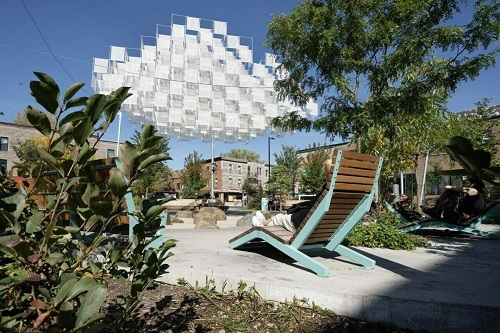 Monday, September 23, 2024
Monday, September 23, 2024  Monday, September 23, 2024
Monday, September 23, 2024 
From green roofs in Toronto to Vancouver’s rain city strategy, Canadian cities are looking to become “sponges” in order to help mitigate some of the effects of extreme rainfall events.
In Montreal, Mayor Valérie Plante announced last week that the city plans to develop some 30 additional “sponge parks” designed to catch and absorb rainwater and keep it from flowing into overburdened sewers during extreme rain events.
Those, combined with an additional 400 “sponge sidewalks,” featuring added vegetation squares, will help the city retain the equivalent of three Olympic swimming pools in water at “half the cost of underground works,” the city said in a news release.
Melanie Glorieux, a sustainable landscape planner with the firm Rousseau Lefebvre said that while the concept of building a “sponge city” isn’t new, it’s an idea that more and more municipalities are embracing as they cope with extreme weather.
The idea, she said, is to divert stormwater into low areas or channels planted with trees, shrubs and grasses, so that more of it is absorbed on the surface and less flows into sewers, lakes or rivers. As an added benefit, the plants filter the water before it enters the system, removing some of the pollutants it picks up from streets.
Keep reading on clearwatertimes.com